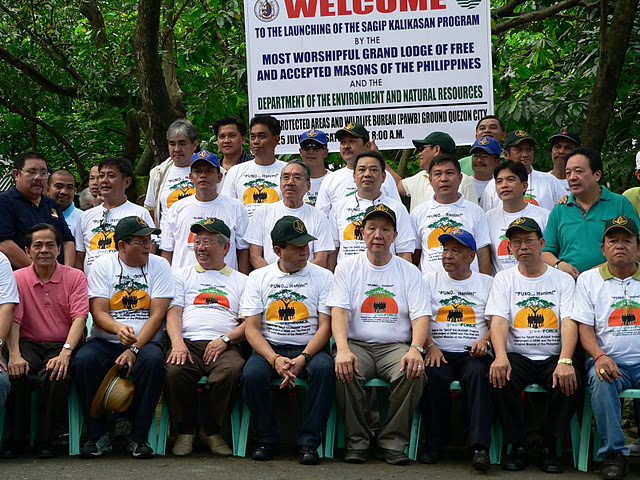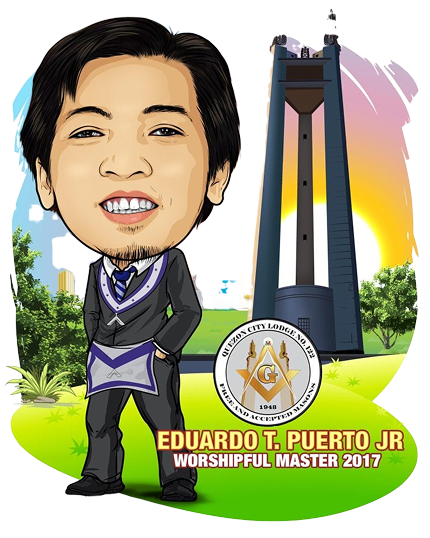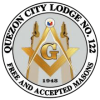About Us
Rooted in Legacy.
United in Brotherhood.

Our Story
Founding Vision
In April 1948, thirty-five visionary brethren, led by WB Petronilo L. Vallejo, petitioned to establish a new lodge in Quezon City. With the Grand Lodge’s approval, Quezon City Lodge held its first meeting that same year—marking the beginning of a legacy that would shape Philippine Masonry for generations.
Growth Through Adversity
Early years were marked by constant movement—meeting in homes, churches, and borrowed halls. Yet through it all, the brethren persevered. In 1971, the lodge finally found its permanent home at the Capitol Masonic Temple, a space built from the passion and unity of its members.
Legacy of Leadership
QCL 122 has proudly produced four Grand Masters—MW Jolly R. Bugarin, MW Reynold S. Fajardo, MW Agustin V. Mateo, and MW Santiago T. Gabionza, Jr.—as well as numerous District Deputies and Grand Line Officers. Our commitment to leadership continues to inspire future generations of Masons.
Service Beyond the Lodge
Public service is at the heart of QCL 122. Through regular civic actions such as free medical missions, scholarships, and disaster relief programs, the lodge serves not just its members, but the wider Filipino community—from Quezon City to Bicol and beyond.
Brotherhood & Family
Masonry is a shared journey. The Quezon City Lodge Ladies’ Circle actively supports lodge endeavors, organizes charitable projects, and joins in fellowship—proving that Masonic values extend to the entire family.
Honors & Milestones
Recognized as the Most Outstanding Lodge in 2008, QCL 122 is also home to award-winning ritualists, Masonic scholars, and respected leaders. The legacy of excellence continues with each new brother raised in the craft.
Worshipful Master's Corner
Last February 11, we held our 69th Public Installation of Officers in Tagaytay. The said event was unprecedented as it was the first time that the Lodge’s Installation was held outside Metro Manila. Nevertheless, the love and support of the brethren was greatly displayed.
Despite the hustle and bustle of Saturday traffic, not to mention that it was a Valentines weekend, 57 of our members were able to attend. In addition, the Ladies Circle (wives of QCL 122 Masons) were also astoundingly represented – more than 25 “atengs” in their beautiful evening dresses. Even the sons and daughters of Masons were there to witness the aforesaid event.
As our Lodge has always been “family-centric” in nature, we have invited as well our Masonic youth organizations. The International Order of DeMolay and International Order of Rainbow for Girls were also in full force. That historic event was also graced by Right Worshipful Abraham N. Tolentino, Deputy Grand Master and our very own, Most Worshipful Santiago T. Gabionza Jr., the Centennial Grand Master. Indeed, the two distinguished gentlemen made our Installation more meaningful.
I would like to thank Worshipful Brother Jeffrey Ian C. Dy, our Immediate Past Master for being the Installing Officer. He was so proficient that some even thought that the lines were read to him through an earpiece while he delivered his lengthy speech. But he did not have any of those to aid him. He didn’t need it anyway.
My deepest gratitude, as well, to Worshipful Brother Marius Alexander N. Ambion, Worshipful Master of Mendez-Nunez Lodge No. 361, who showcased his innate talent as the Master of Ceremonies. It was really an earth-shattering performance.
Also, Worshipful Brother Godo Pablo B. Velarde was the Assistant Master of Ceremonies. He was in fact, Read Moreator of the whole Installation. To the walking Monitor of our Lodge, Read More
I would also like to thank Worshipful Brother Alden Y. Bait, my father in Masonry, for his laudable delivery of the Ancient Rules and Regulations; Very Worshipful Benito G. Se Jr., District Deputy Grand Master, for imparting his wisdom and providing his full support to our Lodge; and Tony Se, for her wonderful delivery of Salute to the Philippine Flag.
A big thank you as well to those people who are very dear to me. To my parents, who are always there to support me in all my endeavors. To my sister, who worked hard in helping me in all the preparations for the Installation as she willingly volunteered to be the event organizer. To my relatives who made time to attend the event, Tito Ric, Tita Muriel, Fei, Mikee, Baby Baba, Kuya Patrick, Ate Valerie and the cutest of them all, Aleyna.
Lastly, to the most important person in my life – my wife. Thanks for always being there for me. For your patience and understanding, and for your love. I implore that you continue to tolerate more as this year will be as exhausting, yet rewarding, as ever.
To my fraternity brothers, as what I expressed during my inaugural speech, let us become men worthy to be called Masons – for the glory of our mother Lodge. Together brethren!

